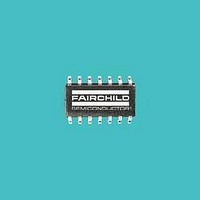RC4157M Fairchild Semiconductor, RC4157M Datasheet - Page 6

RC4157M
Manufacturer Part Number
RC4157M
Description
Op Amps
Manufacturer
Fairchild Semiconductor
Datasheet
1.RC4157M.pdf
(13 pages)
Specifications of RC4157M
Number Of Channels
4
Voltage Gain Db
100 dB
Common Mode Rejection Ratio (min)
80 dB
Input Offset Voltage
5 mV
Supply Current
7 mA
Maximum Power Dissipation
300 mW
Maximum Operating Temperature
+ 70 C
Mounting Style
SMD/SMT
Package / Case
SOIC-14 Wide
Maximum Dual Supply Voltage
+/- 20 V
Minimum Operating Temperature
0 C
Lead Free Status / Rohs Status
No
Available stocks
Company
Part Number
Manufacturer
Quantity
Price
Company:
Part Number:
RC4157M
Manufacturer:
MAXIM
Quantity:
310
PRODUCT SPECIFICATION
Typical Performance Characteristics
Applications
The RC4156 and RC4157 quad operational amplifiers can be
used in almost any 741 application and will provide superior
performance. The higher unity gain bandwidth and slew rate
make it ideal for applications requiring good frequency
response, such as active filter circuits, oscillators and audio
amplifiers.
The following applications have been selected to illustrate
the advantages of using the Fairchild Semiconductor
RC4156 and RC4157 quad operational amplifiers.
Triangle and Square Wave Generator
The circuit of Figure 13 uses a positive feedback loop closed
around a combined comparator and integrator. When power
is applied the output of the comparator will switch to one of
two states, to the maximum positive or maximum negative
voltage. This applies a peak input signal to the integrator,
and the integrator output will ramp either down or up, oppo-
site of the input signal. When the integrator output (which is
connected to the comparator input) reaches a threshold set by
R1 and R2, the comparator will switch to the opposite polar-
ity. This cycle will repeat endlessly, the integrator charging
6
Figure 11. Input Bias, Offset Current vs. Temperature
140
120
100
80
60
40
20
0-
-100 -75 -50 -25
0 +25 +50 +75+100+125+150
T
A
( C)
I
I
OS
B
(continued)
positive then negative, and the comparator switching in a
square wave fashion.
The amplitude of V
operation, it is recommended that R1 and V
a triangle wave at V
allow A3 and A4 to be used for independent adjustment of
output-offset and amplitude over a wide range.
The triangle wave frequency is set by C0, R0, and the maxi-
mum output voltages of the comparator. A more symmetrical
waveform can be generated by adding a back-to-back Zener
diode pair as shown in Figure 14.
An asymmetric triangle wave is needed in some applications.
Adding diodes as shown by the dashed lines is a way to vary
the positive and negative slopes independently.
The frequency range can be very wide and the circuit will
function well up to about 10 kHz. The square wave transi-
tion time at V
140
120
100
80
60
40
20
-100 -75 -50 -25
0
Figure 12. CMRR vs. Temperature
1
is less than 21 µS when using the RC4156.
2
2
is adjusted by varying R1. For best
with ±12V amplitude. This will then
0 +25 +50 +75+100+125+150
T
A
( C)
REV. 1.0.1 6/13/01
R
be set to obtain
RC4156/RC4157












